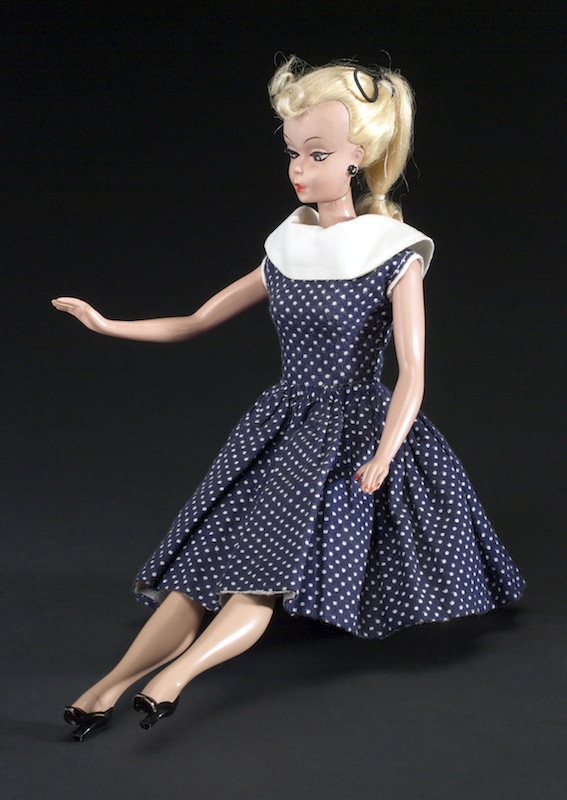The Barbie Doll's Not-for-Kids Origins
BY
JENNIFER LATSON
MARCH 9, 2015 10:30 AM EDT
The precursor to the Barbie doll was not meant for children.
Born in Germany in 1952, the inspiration for America’s most famous doll was a saucy high-end call girl named Lilli. First created as a comic-strip character in the Hamburg newspaper
Bild-Zeitung, the Bild Lilli doll became so popular that she was immortalized in plastic — and sold as an adult novelty, according to Robin Gerber, the author of
Barbie and Ruth.
“Lilli dolls could be bought in tobacco shops, bars and adult-themed toy stores,” Gerber writes. “Men got Lilli dolls as gag gifts at bachelor parties, put them on their car dashboard, dangled them from the rearview mirror, or gave them to girlfriends as a suggestive keepsake.”
Bild Lilli doll, German, 1955
Science & Society Picture Library / Getty Images
The proto-Barbie was just shy of a foot tall, with bulging breasts and a platinum-blonde ponytail, made up for a night on the town with red puckered lips and blue eye shadow. Although Barbie’s curvy proportions are modeled after Lilli’s, the German doll’s heavy makeup and suggestively arched eyebrows didn’t carry over to the American version. The dolls also have tellingly different feet, according to M.G. Lord, the author of
Forever Barbie: The Unauthorized Biography of a Real Doll.
“Unlike Barbie, Lilli doesn’t have an arched foot with itty-bitty toes. She doesn’t even have a foot,” Lord writes. “The end of her leg is cast in the shape of a stiletto-heeled pump and painted a glossy black.”
The Barbie Doll's Not-for-Kids Origins



